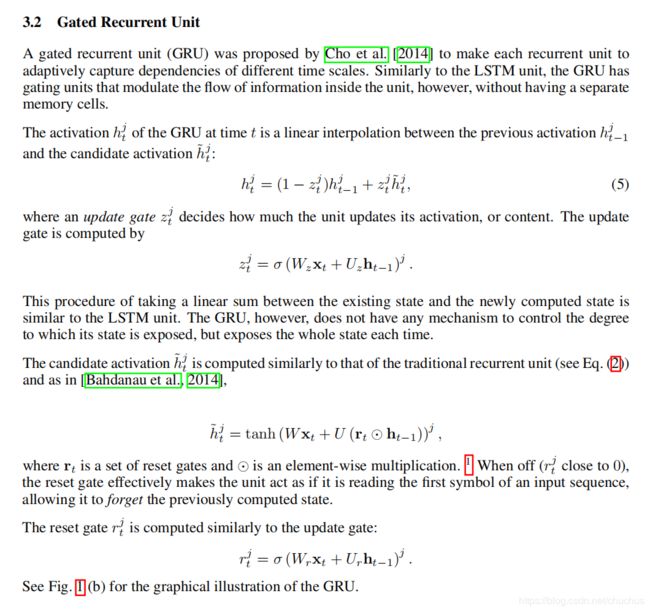- 【C#程序设计】教学讲义——第二章:简单C#程序设计
刘一哥GIS
《GIS程序设计》C#程序设计谭浩强面向对象类
教学目录2.1面向对象的概念2.2建立简单的应用程序2.3窗体和Label控件2.4文本框-属性2.5按钮控件本章小结2.1面向对象的概念2.1.1对象和类1.对象对象是客观世界中对象的模型化。对象是有着特殊数据(属性)与操作(行为)的实体,对象的操作(行为)称为方法。程序中的对象是模型化了的客观世界的对象,它是代码和数据的封装体,用数据表示属性,用代码(过程或函数)表示方法。一个程序对象的属性用
- Django ORM 1. 创建模型(Model)
博观而约取
Pythondjango数据库python
1.ORM介绍什么是ORM?ORM,全称Object-RelationalMapping(对象关系映射),一种通过对象操作数据库的技术。它的核心思想是:我们不直接写SQL,而是用Python对象(类/实例)来操作数据库表和记录。ORM就像一个“翻译官”,帮我们把Python代码翻译成数据库能听懂的SQL命令。为什么使用ORM?Django中的ORM提供了一个高层次、抽象化的接口来操作数据库,它的优
- 正则表达式半匹配Markdown中的图片/链接格式
薄荷你玩_
机器学习/深度学习正则表达式Markdown大模型
使用正则表达式匹配Markdown中的图片格式,判断文本是否是图片/链接的开头(不完整):判断文本结尾是否符合Markdown中图片的格式要求Markdown中图片的格式:正则表达式:.*\!(\[([^[\]]*(\](\([^)]*)?)?)?)?$defis_incomplete_image_markdown(s):"""检查chunk是否是图片的部分:params
- XML命名空间:避免元素名称冲突的利器
t0_54coder
编程问题解决手册xml服务器运维
在XML文档的编写和解析过程中,命名空间(Namespace)是一个非常重要的概念。它不仅有助于避免元素名称的冲突,还促进了代码的重用和模块化。本文将详细探讨XML命名空间的基本概念、语法、使用方式以及如何应用于属性。1.XML命名空间的基本概念XML命名空间是一种避免元素名称冲突的方法。通过使用命名空间,XML文档可以重用其他XML文档中的元素或属性,而无需每次都重新创建它们。这对于处理多个来源
- SQLite 数据库在大数据分析中的应用潜力
数据库管理艺术
数据库sqlite数据分析ai
SQLite数据库在大数据分析中的应用潜力关键词:SQLite、大数据分析、轻量级数据库、嵌入式数据库、数据仓库、OLAP、性能优化摘要:本文深入探讨了SQLite这一轻量级嵌入式数据库在大数据分析领域的应用潜力。我们将从SQLite的核心架构出发,分析其在大数据场景下的优势和限制,并通过实际案例展示如何通过优化策略和扩展技术使SQLite能够处理大规模数据集。文章包含性能对比测试、优化技巧和实际
- 实体,dto,vo三种pojo的区别和联系
不爱吃大饼
java
在软件开发,特别是Java应用程序中,实体(Entity)、数据传输对象(DTO,DataTransferObject)和视图对象(VO,ViewObject)是三种常见的对象类型。它们各自有不同的责任和用途。下面是对它们的定义、区别和联系的详细解释。1.实体(Entity)定义:实体是与数据库表直接对应的对象,通常用于持久化层。它映射到数据库中的一行记录,每个实体对象的属性对应数据库表中的字段。
- XML 命名空间
沐知全栈开发
开发语言
XML命名空间引言XML(可扩展标记语言)作为一种数据存储和交换的格式,因其灵活性、可扩展性和易于解析而被广泛应用于网络数据的传输和存储。在XML中,命名空间的概念用于解决元素名称的冲突问题,确保不同来源的XML文档能够和谐共存。本文将详细探讨XML命名空间的概念、作用及其应用。什么是XML命名空间?XML命名空间是XML文档中的一个特殊属性,用于区分不同来源的元素和属性。简单来说,它是一种标识符
- SQLite3 在嵌入式系统中的应用指南
指令集诗人
sqlite3sqlite数据库嵌入式实时数据库
SQLite3在嵌入式系统中的应用指南一、嵌入式系统中SQLite3的优势SQLite3是嵌入式系统的理想数据库解决方案,具有以下核心优势:特性嵌入式系统价值典型指标轻量级适合资源受限环境库大小:500-700KB零配置无需数据库管理员开箱即用无服务器减少系统复杂性无后台进程低功耗延长电池寿命读操作:~0.001mAh高可靠性应对意外断电ACID事务保证单文件存储简化数据管理单个.db文件二、嵌入
- 从入门到精通:进程信号
每天进步亿丢丢
Linux学习服务器网络linuxc++
引言在操作系统的世界里,信号是一种用于进程间通信和控制的重要机制。信号能够在不同的进程之间传递异步事件,通知进程发生了某种情况。在Linux系统中,信号的使用是非常普遍且重要的,尤其是在处理进程控制、异常处理和进程间通信时。本文将带你深入了解Linux系统中的信号机制,从基本概念到高级应用,全面覆盖信号的生成、阻塞、捕捉和处理。通过对信号的深入理解和实际操作,你将能够更好地控制和管理进程,提高程序
- 生成树协议(STP)技术详解:原理、演进与配置实践
生成树协议(SpanningTreeProtocol,简称STP)是局域网交换网络中的“防堵大师”,旨在解决环路问题,确保数据传输稳定无阻。从经典的IEEE802.1DSTP,到思科的PVST(每VLAN生成树)、快速的RSTP(IEEE802.1w),再到高效的MSTP(IEEE802.1s),STP家族历经演进,满足了现代网络的多样化需求。一、STP概述:局域网的防环基石1.1STP的定义与背
- Python开发AI智能体(三)———Langchain定义提示词模板
【本人】
Agent智能体python人工智能langchain语言模型
前言上篇文章给大家介绍AI项目检测平台LangSmish以及开源框架Langchain的使用,并且带领大家编写了一个案例。这篇文章将介绍在Langchain框架中如何定义提示词模板一、什么是提示词模板?提示词模板(PromptTemplate)是大语言模型(LLM)应用开发中的核心概念,本质是预定义的提示结构框架。它通过将静态文本与动态变量结合,实现标准化、可复用的提示生成机制。它提示词可以是一个
- python:pydub模块
face丶
第三方模块音频pydub
一、安装1、安装模块pipinstallpydub2、安装插件云盘中下载文件ffmpeg打开电脑上的控制面板-系统-高级系统设置-环境变量然后双击path,看到如下的界面:然后点新建会出现一个新建的地址栏,你需要在这个新建地址栏里输入一个文件地址:打开你下载的ffmpeg文件中的bin文件,你应该可以看到一个这样的界面,把这个界面中地址栏中的地址复制粘贴到上面图片新建的地址栏中,然后点确定,来保存
- 投标文件制作中多级标题自动设置
℃-柠檬
职场和发展其他
针对大型项目的投标文件制作,标书中可能会涉及到很多的内容,需要做标题分级和分类,格式调整需要耗费大量的时间和精力,近期由于投标工作需要,自己整理了一稿标书制作过程中的多级标题的自动设置及格式调整的方法,分享给需要的朋友。样式表我同步上传到我自己的博客资源中了,有需要的朋友可以直接下载使用。(PS:我自己用的是2013版的Office)一、定义新的多级列表新建一个空白Word文档,在“开始”中找到列
- TS中的泛型 (学习笔记)
小码龙~
TS学习笔记前端typescript
文章目录前言一、泛型是什么?二、泛型的分类三、泛型的基本使用3.1函数中的泛型使用3.2接口中的泛型使用(运用广泛)3.2类型别名中的泛型使用(运用广泛)3.2类中的泛型使用总结前言泛型的基本使用一、泛型是什么?泛型(Generics)是指在定义函数、接⼝或类的时候,不预先指定具体的类型,⽽在使⽤的时候再指定类型的⼀种特性,简单来说泛型其实就是类型参数,在定义的时候定义形参(类型变量),使⽤的时候
- 【Golang】用gorm实现分页的功能
在成都搬砖的鸭鸭
Golanggolang开发语言后端1024程序员节
目录1、背景2、go库下载3、初始化数据【1】建表【2】插入数据【3】查看数据4、代码示例【1】gorm结构体定义【2】分页结构体定义【3】封装分页方法【4】封装获取数据库连接方法【5】查询列表接口【6】启动http服务【7】调用获取列表接口5、总结1、背景在提供列表接口时一般要用到分页,对于存储在某些数据库中的数据进行分页起来非常的方便,下文给出一个通过gorm进行分页并通过http返回数据的例
- C++快速排序算法详解与实现
小小的博客
排序算法c++算法排序算法c++排序算法
快速排序(QuickSort)是一种高效的排序算法,由英国计算机科学家东尼·霍尔(TonyHoare)于1960年发明。本文将详细讲解快速排序算法的原理和实现,并通过C++语言展示其代码实现。1.快速排序算法原理快速排序算法的基本思想是分治法(DivideandConquer),其核心步骤如下:1.选择一个基准元素(pivot),通常选择序列中的第一个或最后一个元素。2.将序列分为两部分,一部分是
- 揭秘STP:消除二层环路的关键技术
Honey\
网络网络协议tcp/ip信息与通信
STP(生成树)背景二层环路:原因:人为疏忽导致/二层网络的冗余性危害:引起广播风暴/MAC地址漂移STP工作原理:运行该协议的设备通过彼此交互信息发现网络中的环路,并对某些接口进行阻塞来消除环路STP工作过程:一开始,所有交换机都会认为自己是根桥,所有交换机之间交互BPDU进行比较,选举根桥。选举根桥后,再选举根接口,通过比较根桥发送的BPDU来比较大小,小的优选举根接口之后,选举指定接口,也是
- Spring Cloud Ribbon核心负载均衡算法详解
代码的余温
springcloudribbon负载均衡
Ribbon作为SpringCloud生态中的客户端负载均衡工具,提供多种动态负载均衡算法,根据后端服务状态智能分配请求。其核心算法及适用场景如下:一、Ribbon负载均衡算法算法名称工作原理引用来源轮询(RoundRobinRule)按服务列表顺序依次分发请求,实现均匀分摊负载随机(RandomRule)从可用服务列表中随机选择一个实例处理请求加权响应时间(WeightedResponseTim
- 番外:MySQL的一些事务处理
红中马喽
mysql数据库学习笔记开发语言后端
前言因为前天没更新,多补一更,简单介绍一下后端数据库MySQL的事务处理什么是事务处理事务(Transaction):事务是一组SQL语句的执行单元,这些语句被视为一个单独的工作单元。事务的主要目的是保证数据库操作的原子性,即这些操作要么全部执行,要么全部不执行简单来说,事务是用来保证数据库的一致性,完整性的,关于事务处理我们需要提到ACID性A.原子性(Atomicity):事务中的所有操作要么
- python循环语句for
BuckData
python
目录1、for循环2、示例1、for循环Pythonfor循环可以遍历任何可迭代对象。通过使用for循环,我们可以为列表、元组、集合中的每个项目等执行一组语句。range()函数如需循环一组代码指定的次数,我们可以使用range()函数,range()函数返回一个数字序列,默认情况下从0开始,并递增1(默认地),并以指定的数字结束。2、示例#遍历字典d={'CNY':'人民币','USD':'美元
- 【innovus基础】- 最基本的timing工具自动修复方法
一个小白向的timing修复方法就是,完全交给工具有gui界面和命令2种方式:1、gui操作ECO>>optdesign>>勾选fanout修复一轮后,发现hold完全没问题,但setup仍有少量问题。重新再修复一轮。下图中的glitchvio指的是毛刺持续时间或幅度超出允许范围的时序违例。可能造成亚稳态导致逻辑错误等问题。发现一次没有修好,现在只剩下setup的问题,我们可以在gui界面使用in
- python循环语句
Python循环语句文章目录Python循环语句一、实验目的二、实验原理三、实验环境四、实验内容五、实验步骤1.While循环结构2.While无限循环3.For循环语法4.break语句和continue语句一、实验目的掌握循环结构的语法二、实验原理Python中的循环语句有for和while。Python循环语句的控制结构图如下所示:三、实验环境Python3.6以上PyCharm四、实验内容
- 中国双非高校经费TOP榜数据分析
归零鸟
高考考研高校大学
当我们习惯性仰望985、211这些“国家队”时,一批地方重点支持的高校正悄悄发力,手握重金,展现出不逊于名校的“钞能力”。特别是“双非”大学中的佼佼者,它们的年度经费预算,足以让许多普通院校望尘莫及。今天就带大家揭开2024年全国高校经费预算的神秘面纱,尤其关注那些没有985/211光环,却获得财政“真金白银”大力支持的双非实力派们!(数据综合整理自各高校2024年公开预算报告及相关教育资讯平台,
- 使用 TinyVue 组件库搭建前端项目的实操体验
Echo_Wish
前端前端
引言在本次活动中,我选择了使用OpenTiny提供的TinyVue组件库来搭建一个前端项目。通过这次实践,我不仅深入了解了TinyVue组件库的核心优势,还体验到了其在跨框架、跨版本开发中的便捷性。本文将分享我的实操过程和使用感受。项目搭建过程环境准备首先,我按照官方文档的指引,完成了开发环境的准备工作。包括安装Node.js、VueCLI以及TinyVue组件库。#安装VueCLInpminst
- Golang 结合 WebSocket 实现双向通信
Golang编程笔记
golangwebsocket开发语言ai
Golang结合WebSocket实现双向通信关键词:Golang、WebSocket、双向通信、实时通信、网络编程、Go语言、HTTP升级摘要:本文将深入探讨如何使用Golang实现WebSocket双向通信。我们将从WebSocket的基本概念讲起,逐步深入到Golang中的具体实现,包括连接建立、消息处理、并发控制等核心内容。通过本文,读者将掌握使用Golang构建实时双向通信系统的完整知识
- 【Python从零到壹】Python中的标识符和保留字
互联网老辛
#Python从零到壹Python
保留字,也叫关键字,这些关键字是python直接提供给我们使用的,因此,我们在定义标识符的时候,不能用这些保留字。比如教育局就属于官方用的,你开个公司起名就不能叫教育局怎么查看关键字?importkeywordprint(keyword.kwlist)输出结果:E:\Python_demo\vippython\venv\Scripts\python.exeE:/Python_demo/vippyt
- Go基础学习06-Golang标准库container/list(双向链表)深入讲解;延迟初始化技术;Element;List;Ring
one2excellent
golanggolang学习list链表后端延迟初始化
基础介绍单向链表中的每个节点包含数据和指向下一个节点的指针。其特点是每个节点只知道下一个节点的位置,使得数据只能单向遍历。示意图如下:双向链表中的每个节点都包含指向前一个节点和后一个节点的指针。这使得在双向链表中可以从前向后或从后向前遍历。示意图如下:结合上面的图就很容易明白单、双链表的定义。其中双向链表可以从前向后,也可以从后向前遍历,操作起来也更加方便。接下来我们看看官方给的例子:import
- Golang学习日志 ━━ 单向链表
暂时先用这个名字
Golanggogolang
因为转载必须指明原文网址,而本文内容整合了网上多篇技术文章,无法明确其中一条,所以选择了原创。已在最后的参考目录里列出本文所有涉及的文章。定义单向链表(单链表)是链表的一种,是一种链式存取的数据结构,用一组地址任意的存储单元存放线性表中的数据元素。其特点是链表的链接方向是单向的,对链表的访问要通过顺序读取从头部开始;链表是由结点构成,head指针指向第一个成为表头结点,而终止于最后一个指向nuLL
- 【微信小程序】关于授权拒绝后处理
一般情况下,微信授权拒绝之后无法再次调用起授权弹框,所以可以通过调用设置权限按钮来打开权限信息下面代码以微信位置权限代码为例://位置授权exportconstopenPosition=()=>{returnnewPromise((resolve,reject)=>{//获取位置信息scope.userLocation为位置授权属性,如需其他属性可直接替换wx.getSetting({succes
- Python中的变量与数据类型
難釋懷
pythonwindows开发语言
一、前言在Python编程中,变量(Variable)和数据类型(DataType)是程序开发中最基本也是最核心的概念。变量用于存储程序运行过程中的各种值,而数据类型则决定了变量可以存储什么样的数据、支持哪些操作。Python作为一门动态类型语言,无需显式声明变量的数据类型,解释器会根据赋给变量的值自动推断其类型。这种特性使得Python更加简洁易用,但也要求开发者对常见数据类型有清晰的认识。本文
- Java 并发包之线程池和原子计数
lijingyao8206
Java计数ThreadPool并发包java线程池
对于大数据量关联的业务处理逻辑,比较直接的想法就是用JDK提供的并发包去解决多线程情况下的业务数据处理。线程池可以提供很好的管理线程的方式,并且可以提高线程利用率,并发包中的原子计数在多线程的情况下可以让我们避免去写一些同步代码。
这里就先把jdk并发包中的线程池处理器ThreadPoolExecutor 以原子计数类AomicInteger 和倒数计时锁C
- java编程思想 抽象类和接口
百合不是茶
java抽象类接口
接口c++对接口和内部类只有简介的支持,但在java中有队这些类的直接支持
1 ,抽象类 : 如果一个类包含一个或多个抽象方法,该类必须限定为抽象类(否者编译器报错)
抽象方法 : 在方法中仅有声明而没有方法体
package com.wj.Interface;
- [房地产与大数据]房地产数据挖掘系统
comsci
数据挖掘
随着一个关键核心技术的突破,我们已经是独立自主的开发某些先进模块,但是要完全实现,还需要一定的时间...
所以,除了代码工作以外,我们还需要关心一下非技术领域的事件..比如说房地产
&nb
- 数组队列总结
沐刃青蛟
数组队列
数组队列是一种大小可以改变,类型没有定死的类似数组的工具。不过与数组相比,它更具有灵活性。因为它不但不用担心越界问题,而且因为泛型(类似c++中模板的东西)的存在而支持各种类型。
以下是数组队列的功能实现代码:
import List.Student;
public class
- Oracle存储过程无法编译的解决方法
IT独行者
oracle存储过程
今天同事修改Oracle存储过程又导致2个过程无法被编译,流程规范上的东西,Dave 这里不多说,看看怎么解决问题。
1. 查看无效对象
XEZF@xezf(qs-xezf-db1)> select object_name,object_type,status from all_objects where status='IN
- 重装系统之后oracle恢复
文强chu
oracle
前几天正在使用电脑,没有暂停oracle的各种服务。
突然win8.1系统奔溃,无法修复,开机时系统 提示正在搜集错误信息,然后再开机,再提示的无限循环中。
无耐我拿出系统u盘 准备重装系统,没想到竟然无法从u盘引导成功。
晚上到外面早了一家修电脑店,让人家给装了个系统,并且那哥们在我没反应过来的时候,
直接把我的c盘给格式化了 并且清理了注册表,再装系统。
然后的结果就是我的oracl
- python学习二( 一些基础语法)
小桔子
pthon基础语法
紧接着把!昨天没看继续看django 官方教程,学了下python的基本语法 与c类语言还是有些小差别:
1.ptyhon的源文件以UTF-8编码格式
2.
/ 除 结果浮点型
// 除 结果整形
% 除 取余数
* 乘
** 乘方 eg 5**2 结果是5的2次方25
_&
- svn 常用命令
aichenglong
SVN版本回退
1 svn回退版本
1)在window中选择log,根据想要回退的内容,选择revert this version或revert chanages from this version
两者的区别:
revert this version:表示回退到当前版本(该版本后的版本全部作废)
revert chanages from this versio
- 某小公司面试归来
alafqq
面试
先填单子,还要写笔试题,我以时间为急,拒绝了它。。时间宝贵。
老拿这些对付毕业生的东东来吓唬我。。
面试官很刁难,问了几个问题,记录下;
1,包的范围。。。public,private,protect. --悲剧了
2,hashcode方法和equals方法的区别。谁覆盖谁.结果,他说我说反了。
3,最恶心的一道题,抽象类继承抽象类吗?(察,一般它都是被继承的啊)
4,stru
- 动态数组的存储速度比较 集合框架
百合不是茶
集合框架
集合框架:
自定义数据结构(增删改查等)
package 数组;
/**
* 创建动态数组
* @author 百合
*
*/
public class ArrayDemo{
//定义一个数组来存放数据
String[] src = new String[0];
/**
* 增加元素加入容器
* @param s要加入容器
- 用JS实现一个JS对象,对象里有两个属性一个方法
bijian1013
js对象
<html>
<head>
</head>
<body>
用js代码实现一个js对象,对象里有两个属性,一个方法
</body>
<script>
var obj={a:'1234567',b:'bbbbbbbbbb',c:function(x){
- 探索JUnit4扩展:使用Rule
bijian1013
java单元测试JUnitRule
在上一篇文章中,讨论了使用Runner扩展JUnit4的方式,即直接修改Test Runner的实现(BlockJUnit4ClassRunner)。但这种方法显然不便于灵活地添加或删除扩展功能。下面将使用JUnit4.7才开始引入的扩展方式——Rule来实现相同的扩展功能。
1. Rule
&n
- [Gson一]非泛型POJO对象的反序列化
bit1129
POJO
当要将JSON数据串反序列化自身为非泛型的POJO时,使用Gson.fromJson(String, Class)方法。自身为非泛型的POJO的包括两种:
1. POJO对象不包含任何泛型的字段
2. POJO对象包含泛型字段,例如泛型集合或者泛型类
Data类 a.不是泛型类, b.Data中的集合List和Map都是泛型的 c.Data中不包含其它的POJO
- 【Kakfa五】Kafka Producer和Consumer基本使用
bit1129
kafka
0.Kafka服务器的配置
一个Broker,
一个Topic
Topic中只有一个Partition() 1. Producer:
package kafka.examples.producers;
import kafka.producer.KeyedMessage;
import kafka.javaapi.producer.Producer;
impor
- lsyncd实时同步搭建指南——取代rsync+inotify
ronin47
1. 几大实时同步工具比较 1.1 inotify + rsync
最近一直在寻求生产服务服务器上的同步替代方案,原先使用的是 inotify + rsync,但随着文件数量的增大到100W+,目录下的文件列表就达20M,在网络状况不佳或者限速的情况下,变更的文件可能10来个才几M,却因此要发送的文件列表就达20M,严重减低的带宽的使用效率以及同步效率;更为要紧的是,加入inotify
- java-9. 判断整数序列是不是二元查找树的后序遍历结果
bylijinnan
java
public class IsBinTreePostTraverse{
static boolean isBSTPostOrder(int[] a){
if(a==null){
return false;
}
/*1.只有一个结点时,肯定是查找树
*2.只有两个结点时,肯定是查找树。例如{5,6}对应的BST是 6 {6,5}对应的BST是
- MySQL的sum函数返回的类型
bylijinnan
javaspringsqlmysqljdbc
今天项目切换数据库时,出错
访问数据库的代码大概是这样:
String sql = "select sum(number) as sumNumberOfOneDay from tableName";
List<Map> rows = getJdbcTemplate().queryForList(sql);
for (Map row : rows
- java设计模式之单例模式
chicony
java设计模式
在阎宏博士的《JAVA与模式》一书中开头是这样描述单例模式的:
作为对象的创建模式,单例模式确保某一个类只有一个实例,而且自行实例化并向整个系统提供这个实例。这个类称为单例类。 单例模式的结构
单例模式的特点:
单例类只能有一个实例。
单例类必须自己创建自己的唯一实例。
单例类必须给所有其他对象提供这一实例。
饿汉式单例类
publ
- javascript取当月最后一天
ctrain
JavaScript
<!--javascript取当月最后一天-->
<script language=javascript>
var current = new Date();
var year = current.getYear();
var month = current.getMonth();
showMonthLastDay(year, mont
- linux tune2fs命令详解
daizj
linuxtune2fs查看系统文件块信息
一.简介:
tune2fs是调整和查看ext2/ext3文件系统的文件系统参数,Windows下面如果出现意外断电死机情况,下次开机一般都会出现系统自检。Linux系统下面也有文件系统自检,而且是可以通过tune2fs命令,自行定义自检周期及方式。
二.用法:
Usage: tune2fs [-c max_mounts_count] [-e errors_behavior] [-g grou
- 做有中国特色的程序员
dcj3sjt126com
程序员
从出版业说起 网络作品排到靠前的,都不会太难看,一般人不爱看某部作品也是因为不喜欢这个类型,而此人也不会全不喜欢这些网络作品。究其原因,是因为网络作品都是让人先白看的,看的好了才出了头。而纸质作品就不一定了,排行榜靠前的,有好作品,也有垃圾。 许多大牛都是写了博客,后来出了书。这些书也都不次,可能有人让为不好,是因为技术书不像小说,小说在读故事,技术书是在学知识或温习知识,有
- Android:TextView属性大全
dcj3sjt126com
textview
android:autoLink 设置是否当文本为URL链接/email/电话号码/map时,文本显示为可点击的链接。可选值(none/web/email/phone/map/all) android:autoText 如果设置,将自动执行输入值的拼写纠正。此处无效果,在显示输入法并输
- tomcat虚拟目录安装及其配置
eksliang
tomcat配置说明tomca部署web应用tomcat虚拟目录安装
转载请出自出处:http://eksliang.iteye.com/blog/2097184
1.-------------------------------------------tomcat 目录结构
config:存放tomcat的配置文件
temp :存放tomcat跑起来后存放临时文件用的
work : 当第一次访问应用中的jsp
- 浅谈:APP有哪些常被黑客利用的安全漏洞
gg163
APP
首先,说到APP的安全漏洞,身为程序猿的大家应该不陌生;如果抛开安卓自身开源的问题的话,其主要产生的原因就是开发过程中疏忽或者代码不严谨引起的。但这些责任也不能怪在程序猿头上,有时会因为BOSS时间催得紧等很多可观原因。由国内移动应用安全检测团队爱内测(ineice.com)的CTO给我们浅谈关于Android 系统的开源设计以及生态环境。
1. 应用反编译漏洞:APK 包非常容易被反编译成可读
- C#根据网址生成静态页面
hvt
Web.netC#asp.nethovertree
HoverTree开源项目中HoverTreeWeb.HVTPanel的Index.aspx文件是后台管理的首页。包含生成留言板首页,以及显示用户名,退出等功能。根据网址生成页面的方法:
bool CreateHtmlFile(string url, string path)
{
//http://keleyi.com/a/bjae/3d10wfax.htm
stri
- SVG 教程 (一)
天梯梦
svg
SVG 简介
SVG 是使用 XML 来描述二维图形和绘图程序的语言。 学习之前应具备的基础知识:
继续学习之前,你应该对以下内容有基本的了解:
HTML
XML 基础
如果希望首先学习这些内容,请在本站的首页选择相应的教程。 什么是SVG?
SVG 指可伸缩矢量图形 (Scalable Vector Graphics)
SVG 用来定义用于网络的基于矢量
- 一个简单的java栈
luyulong
java数据结构栈
public class MyStack {
private long[] arr;
private int top;
public MyStack() {
arr = new long[10];
top = -1;
}
public MyStack(int maxsize) {
arr = new long[maxsize];
top
- 基础数据结构和算法八:Binary search
sunwinner
AlgorithmBinary search
Binary search needs an ordered array so that it can use array indexing to dramatically reduce the number of compares required for each search, using the classic and venerable binary search algori
- 12个C语言面试题,涉及指针、进程、运算、结构体、函数、内存,看看你能做出几个!
刘星宇
c面试
12个C语言面试题,涉及指针、进程、运算、结构体、函数、内存,看看你能做出几个!
1.gets()函数
问:请找出下面代码里的问题:
#include<stdio.h>
int main(void)
{
char buff[10];
memset(buff,0,sizeof(buff));
- ITeye 7月技术图书有奖试读获奖名单公布
ITeye管理员
活动ITeye试读
ITeye携手人民邮电出版社图灵教育共同举办的7月技术图书有奖试读活动已圆满结束,非常感谢广大用户对本次活动的关注与参与。
7月试读活动回顾:
http://webmaster.iteye.com/blog/2092746
本次技术图书试读活动的优秀奖获奖名单及相应作品如下(优秀文章有很多,但名额有限,没获奖并不代表不优秀):
《Java性能优化权威指南》

